For over two decades, hybrid and electric vehicles have moved from novel concepts to mainstream options. Yet, discussions surrounding their long-term reliability often paint them as unproven technologies fraught with potential pitfalls, particularly concerning battery longevity and replacement costs. As someone deeply involved in automotive repair, I often hear these concerns. But my extensive experience behind the wheel of a Honda Civic Hybrid – arguably one of the most debated hybrid models ever produced – tells a different story. Having logged over 200,000 miles in this vehicle, I aim to dispel these myths and share a realistic perspective on civic hybrid ownership.
In 2011, facing a lengthy daily commute and soaring fuel prices, fuel efficiency became a top priority without exceeding a budget. While the Toyota Prius was the obvious choice, even used models remained expensive. I was about to settle for a conventional car when I stumbled upon the second-generation Honda Civic Hybrid (HCHII). Local dealerships had several year-and-a-half-old models, each with around 30,000 miles. The price point was compelling – approximately $14,000, nearly half the original MSRP. After test driving a few and observing fuel economy figures close to 50 mpg, I finalized a deal, feeling like I had found an exceptional bargain on a civic hybrid.
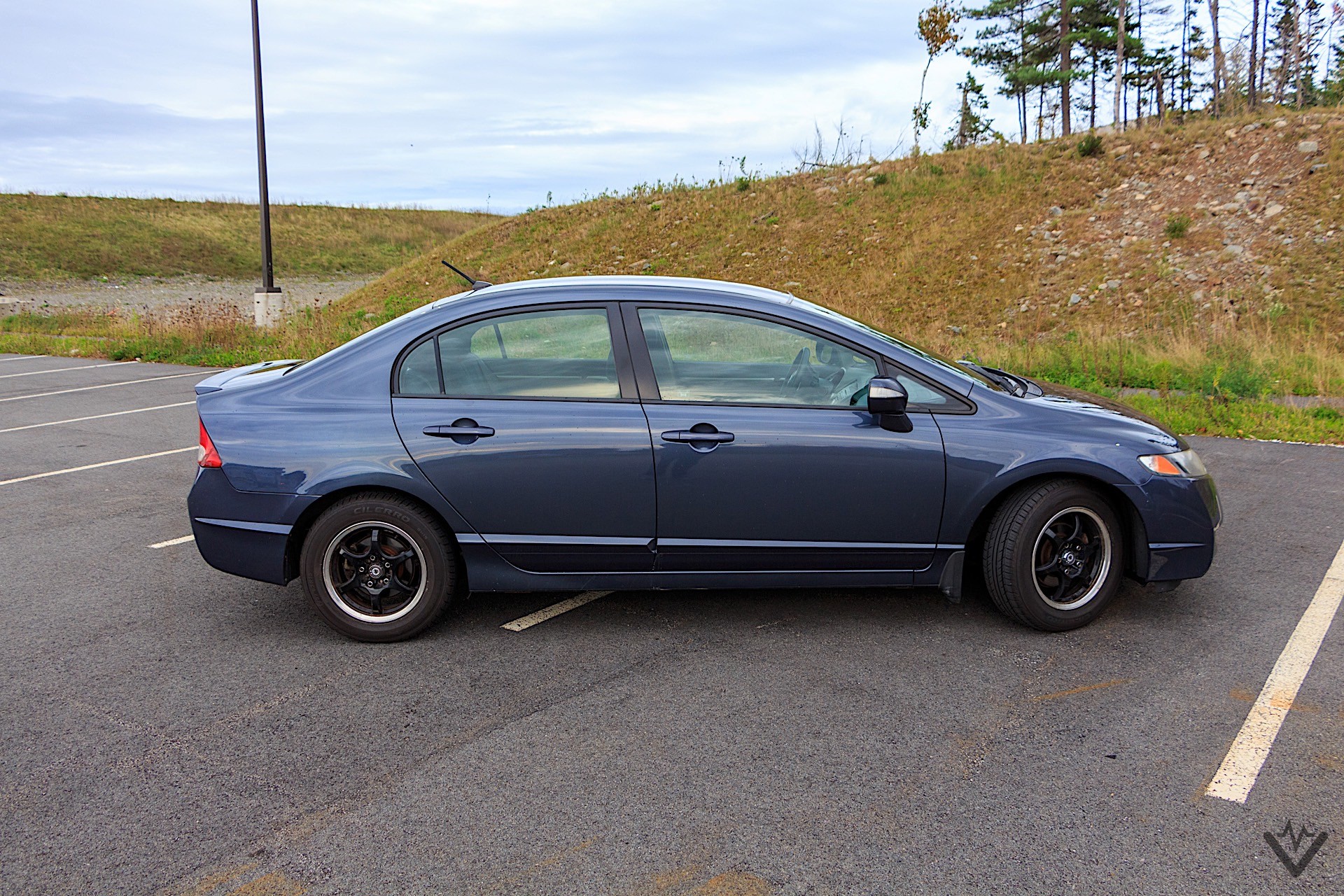 Used Honda Civic Hybrid purchase.
Used Honda Civic Hybrid purchase.
Before purchasing the civic hybrid, some research revealed a peculiar characteristic. Despite being nearly two years old, the car had been in service for only 18 months, with six months spent sitting at the dealership. This extended period of inactivity is a known issue for the HCHII’s battery. The owner’s manual, often overlooked by used car dealers, mentions that prolonged periods of inactivity can significantly reduce battery lifespan, potentially leading to failure within a year.
While the manual doesn’t explicitly state immediate battery failure, it does warn of reduced battery life. This particular civic hybrid had covered minimal mileage in the preceding six months, primarily just being moved around the dealer’s lot. Knowing this, I proceeded with the purchase, aware that it was a race against time between potential battery failure and reaching the mileage limit of the warranty. Fortunately, I won that race, a story I will elaborate on later.
One of the primary appeals of this civic hybrid was its understated nature. Unlike the then-ubiquitous and somewhat attention-grabbing Prius, the Civic Hybrid offered superior fuel economy in a familiar, less conspicuous package.
Initially, my main concern wasn’t the hybrid system itself, but the Continuously Variable Transmission (CVT). CVTs had a reputation for potential expensive failures. However, as my mileage climbed, this concern proved unfounded. The CVT in the civic hybrid performed reliably throughout my ownership.
What did I do first with my new, fuel-efficient civic hybrid, besides using it for my daily commute? I took it racing. Well, sort of.
 Honda Civic Hybrid on autocross course.
Honda Civic Hybrid on autocross course.
Track days for a car still under finance didn’t seem prudent. Instead, I discovered autocross. Autocross provided the thrill of performance driving at lower speeds and over shorter courses. I was immediately captivated. This led to upgrading to road-legal Toyo slicks, transforming the civic hybrid into a surprisingly agile and quick car on tight circuits.
The combination of electric motor torque, sticky tires, and the CVT allowed me to outperform much faster cars, including Nissan GT-Rs and Porsches, on tighter autocross tracks. While driver skill certainly played a role, the civic hybrid’s unexpected agility was undeniable. I competed for three seasons, earning class trophies each year – a testament to the unexpected capabilities of this civic hybrid.
While autocrossing a civic hybrid might seem unconventional, it showcases the breadth of experiences this car endured. It tackled long commutes, extensive road trips, and even weekend performance driving. This diverse usage provides a comprehensive perspective on its long-term reliability and capabilities.
On its factory-fresh Firestone tires, the civic hybrid initially delivered around 47 mpg during my daily commute. The fuel economy gauge consistently matched my calculations, a detail quickly verified when filling up multiple times a week. This consistent fuel efficiency persisted for a considerable time. During weekend drives on slower highways, fuel economy improved further. Occasionally, I would see figures exceeding 50 mpg, though never for an entire tank.
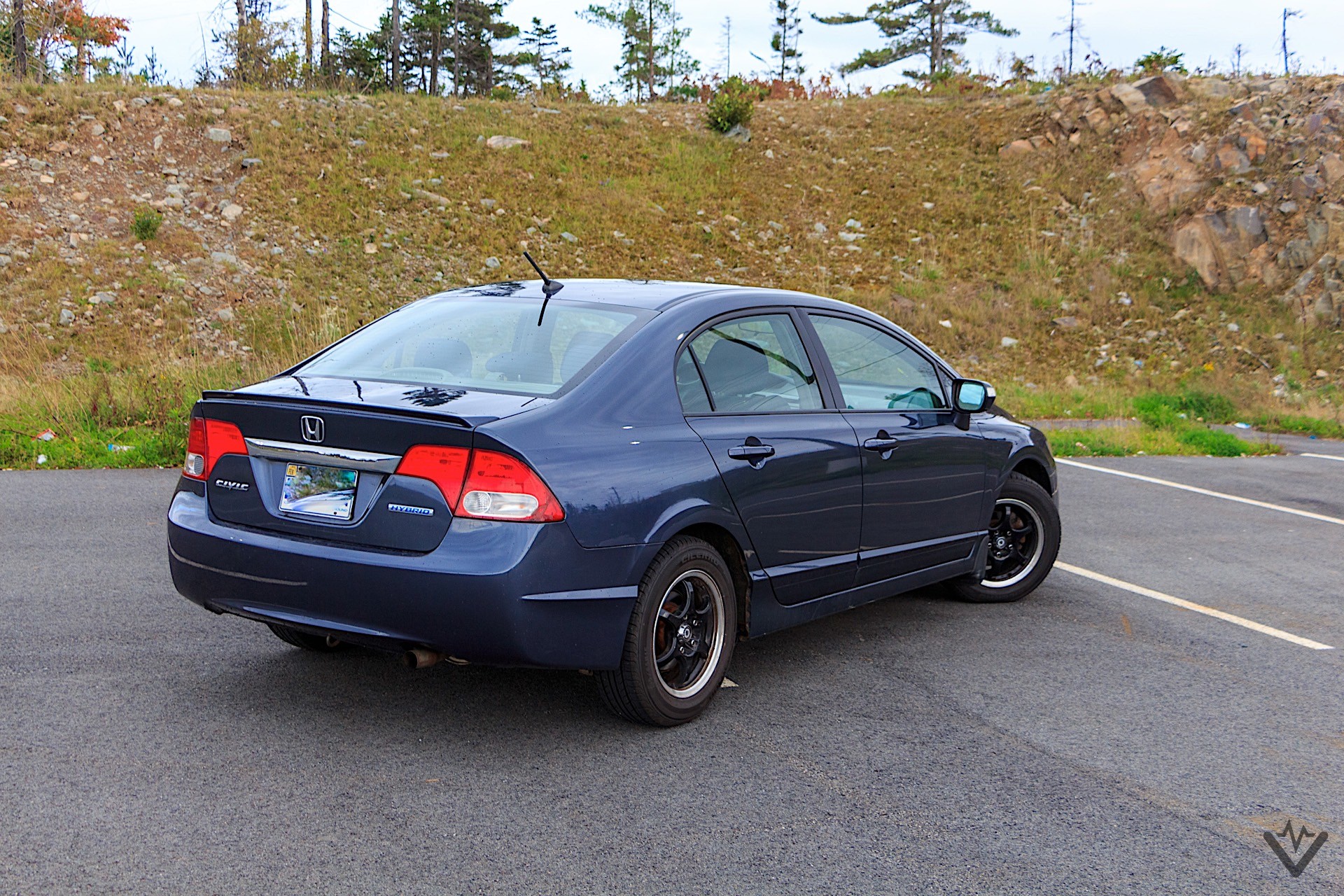 Civic Hybrid fuel efficiency.
Civic Hybrid fuel efficiency.
My daily commutes became a self-imposed hypermiling challenge, within the bounds of responsible driving on a two-lane highway. How often did I use the brakes during my commute? As infrequently as three times, traffic permitting. By employing techniques like coasting to stop signs, I could potentially reduce braking even further, though patience often dictated otherwise.
I discovered that for brief stops or near-stops, such as at yield signs, engaging the CVT’s “S” mode would deactivate the auto start-stop system. “S” mode also enhanced regenerative braking, allowing me to maintain speed on downhill stretches and maximize momentum recovery when approaching off-ramps and stop signs.
My best full tank mileage, according to my records, was 48 mpg. This is a noteworthy figure for a car with a modest 20 hp electric motor and a 1.3-liter engine that frequently ran at high RPMs on inclines, especially with cruise control engaged. Under heavy load, the engine generated significant heat, a stark contrast to its inability to warm up sufficiently during idling – a common characteristic of modern small-engine Hondas.
Despite achieving impressive MPG figures, I never surpassed 500 miles on a single tank. Typically, refueling occurred closer to the 400-mile mark, influenced by gas station locations and my schedule. Winter months often saw significantly reduced fuel economy, with heavy winter wheels and tires dropping figures into the high 30s. Driving through snowstorms naturally worsened fuel consumption, although that’s understandable. Less forgivable was the aerodynamic undertray, which detached in only my third snowstorm, requiring numerous fragile and expensive clips for replacement.
Around 74,000 miles, the event civic hybrid owners dread occurred: repeated battery “recalibration.”
Routine maintenance was frequent, occurring roughly every six weeks or around 8,000 miles when the Maintenance Minder indicator illuminated. Oil changes requiring three liters of 0W20 were inexpensive. Less convenient, but still manageable, was the CVT fluid change, also requiring three liters but at a higher cost per liter. While dealer service packages approached $200, changing the CVT fluid was a straightforward 10-minute DIY task. By the time I traded the car, I was proactively changing the CVT fluid with every oil change as preventative maintenance.
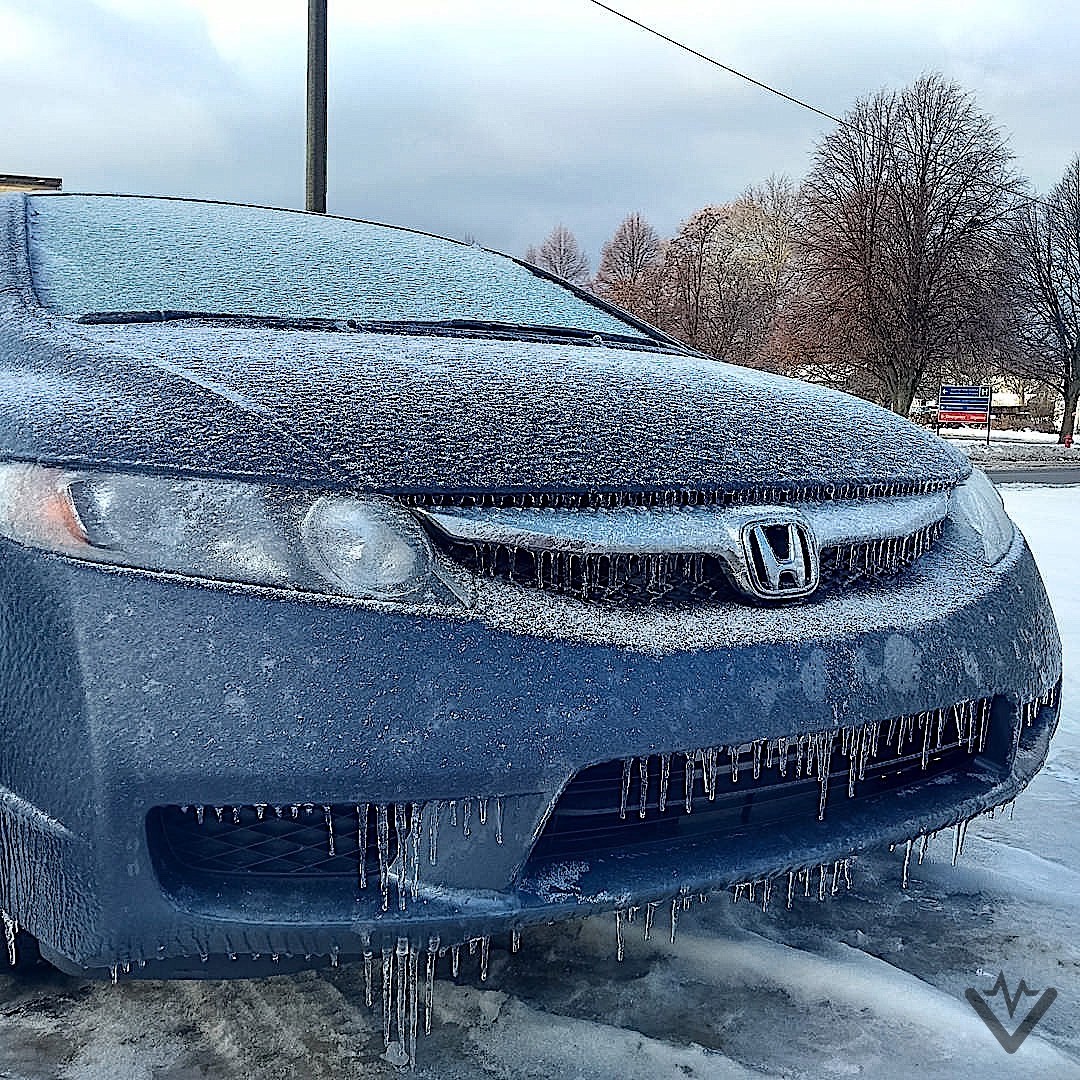 Canadian landscape during Civic Hybrid ownership.
Canadian landscape during Civic Hybrid ownership.
Then, at approximately 74,000 miles, the dreaded battery recalibration issue surfaced. The battery charge level would rapidly fluctuate, going from full to empty within a mile or two, remaining at zero for a few miles, and then slowly recharging. During these fluctuations, electric assist was non-existent. Worse, the already modest 90 hp 1.3-liter engine would divert power to battery charging, rendering acceleration sluggish, particularly on hills.
When this recalibration issue became a daily occurrence, especially on hills, I documented it via video and visited my Honda dealer. Although the IMA (Integrated Motor Assist) light – typically a prerequisite for battery replacement – was not illuminated, they acknowledged the battery malfunction and scheduled a replacement within a couple of days under warranty.
While I don’t have the exact invoice readily available, I recall the replacement battery cost being around $6,500, with the total bill, including labor and tax, exceeding $8,000. Had this repair been out of warranty, would I have scrapped the car? No, for two reasons. First, the civic hybrid can operate effectively even with a significantly degraded battery, and even for a period with no high-voltage battery function at all. Second, aftermarket replacement batteries were available for around $2,000 at the time and could be installed relatively quickly. Currently, new replacement battery packs for the civic hybrid can be found for approximately $1,500.
READ ALSO: 2021 Toyota Prius review
The battery issue led to an unexpected realization about the civic hybrid. Like many hybrids, it utilizes the electric motor for engine starting, resulting in near-instantaneous starts without the typical cranking of a conventional starter. However, it also retains a traditional 12-volt starter as a backup.
On the last day before the battery replacement, the conventional starter engaged. Accustomed to the silent hybrid starts, I initially thought a major component had failed. Then, I remembered the backup starter system. Over the remaining lifespan of the car, I only heard the conventional starter three more times: once on an extremely cold morning, and twice when the high-voltage battery was disconnected for repairs requiring welding.
Post-battery replacement, fuel economy returned to the 40s from a temporary dip into the 30s during the battery issue, and the sluggish uphill performance was resolved. This improved performance and fuel efficiency remained consistent tank after tank, mile after mile. The only recurring issue was the worsening CVT “rubber-banding” effect as CVT fluid service intervals approached, manifesting as shuddering from a standstill on inclines. More frequent CVT fluid changes mitigated this, although the required intervals gradually shortened over time.
At 150,000 miles, the first major mechanical repair became necessary. The rear brakes, due to less frequent use thanks to regenerative braking, had worn down to the wear indicators. More significantly, the rear rotors were severely scored. This highlighted a crucial point: even though brake pads last longer on hybrids and EVs, brake system servicing is still essential, especially if the brakes are used less frequently. Neglecting maintenance led to needing new calipers, rotors, and pads because I hadn’t lubricated the caliper sliders or inspected the pistons since purchasing the car 120,000 miles prior.
Five Canadian winters and high mileage had taken their toll. The replacement calipers even seized straight out of the box – a common issue with remanufactured parts. Warranty replacements and another set of pads resolved the immediate problem, but the lower quality of the replacement parts necessitated another set of rotors and pads before I eventually sold the civic hybrid.
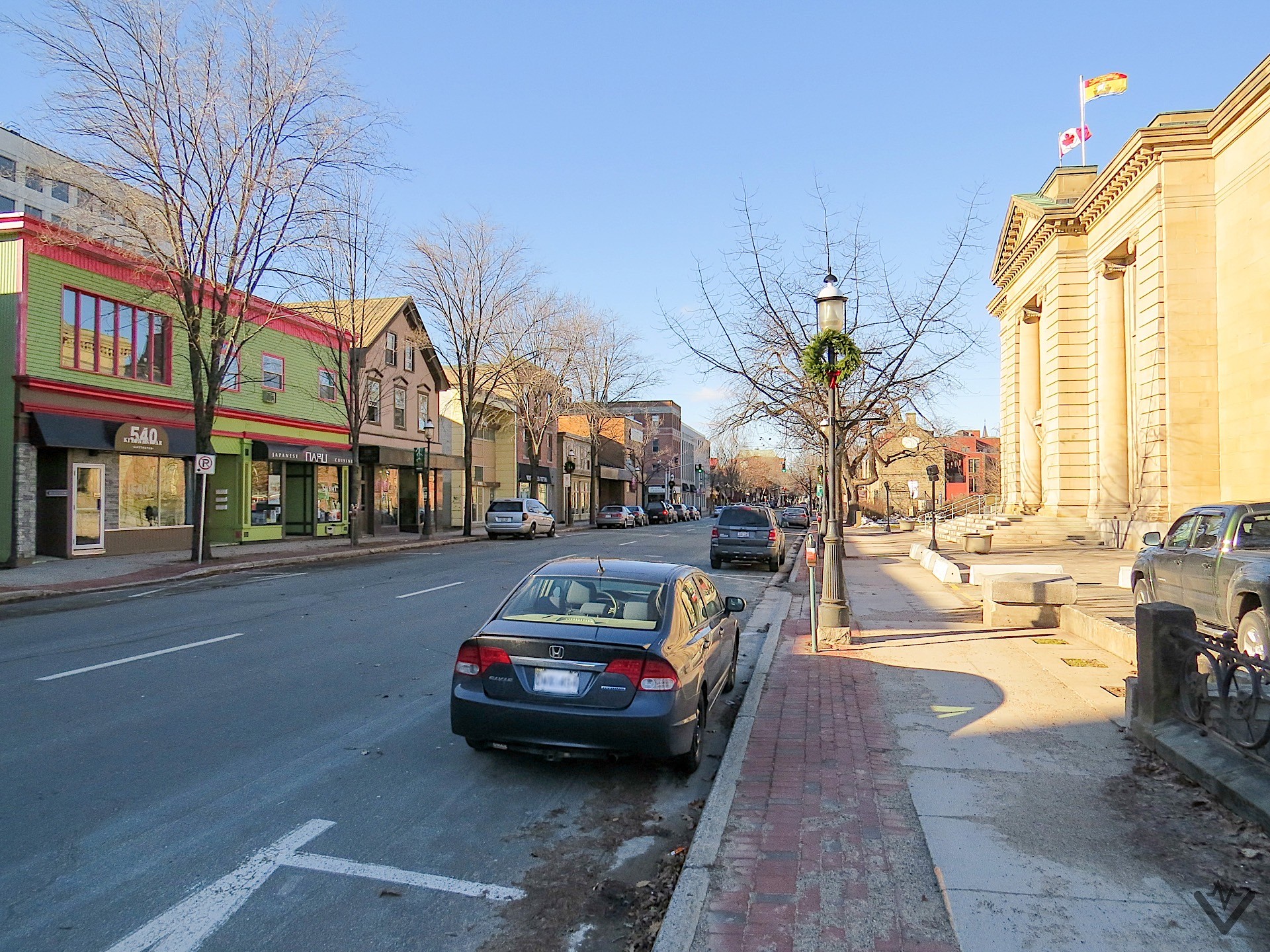 Civic Hybrid in a snowy Canadian environment.
Civic Hybrid in a snowy Canadian environment.
The front brake pads lasted considerably longer, despite the autocross use, finally requiring replacement around 180,000 miles. They had been on the car so long that corrosion had reduced the bolt-hole diameter in the rotors, preventing removal from the wheel studs. Removing the rotors required a week of evenings spent cutting them off. The lesson learned: service your brakes proactively, even if they seem to be functioning normally.
Proactive brake service is crucial, even if everything seems fine.
The original 12-volt battery reached the end of its life around the seven-year mark, failing abruptly on a very cold night. While the car would still start, the headlights and dashboard lights, including the digital speedometer, malfunctioned, and the engine misfired severely. Towing the car home and replacing the 12-volt battery the next day resolved all issues.
Around 80,000 miles, I upgraded the factory rear sway bar to a thicker unit from a Civic Si. This significantly sharpened handling and enhanced driving enjoyment. Later, when the sway bar links needed replacement and the repair became complicated, I briefly drove the car without a rear sway bar. While still functional, the handling was noticeably softer. On a whim, I even briefly drove the car around the neighborhood without the muffler to experience the sound – it remained surprisingly quiet, still the most silent car in the vicinity.
Slightly over a year into ownership, the civic hybrid was involved in its first accident. While stationary in a drive-thru line, a Honda CR-V in front unexpectedly reversed. Despite honking, the CR-V’s spare tire and hitch impacted my car, necessitating replacement of the bumper and hood. The body shop performed an exceptional job matching the complex color-shifting paint. Later, the trunk was repainted due to a factory recall, and the entire rear end was repainted again three years later after a separate incident.
Despite these minor incidents and repairs, the civic hybrid was remarkably reliable, almost to a fault, even though I personally didn’t love it.
Due to the civic hybrid’s exceptional fuel economy, particularly on country roads where it easily achieved over 40 mpg compared to my previous car’s 30 mpg, I began driving significantly more than just commuting. Weekend drives throughout the region became frequent, resulting in approximately 48,000 miles driven annually in the first two years of ownership. Later, a shorter commute reduced annual mileage. Tire selection significantly impacted fuel economy. Two sets of summer tires I purchased, lacking low rolling resistance, proved to be a false economy; their poor fuel efficiency negated any initial cost savings.
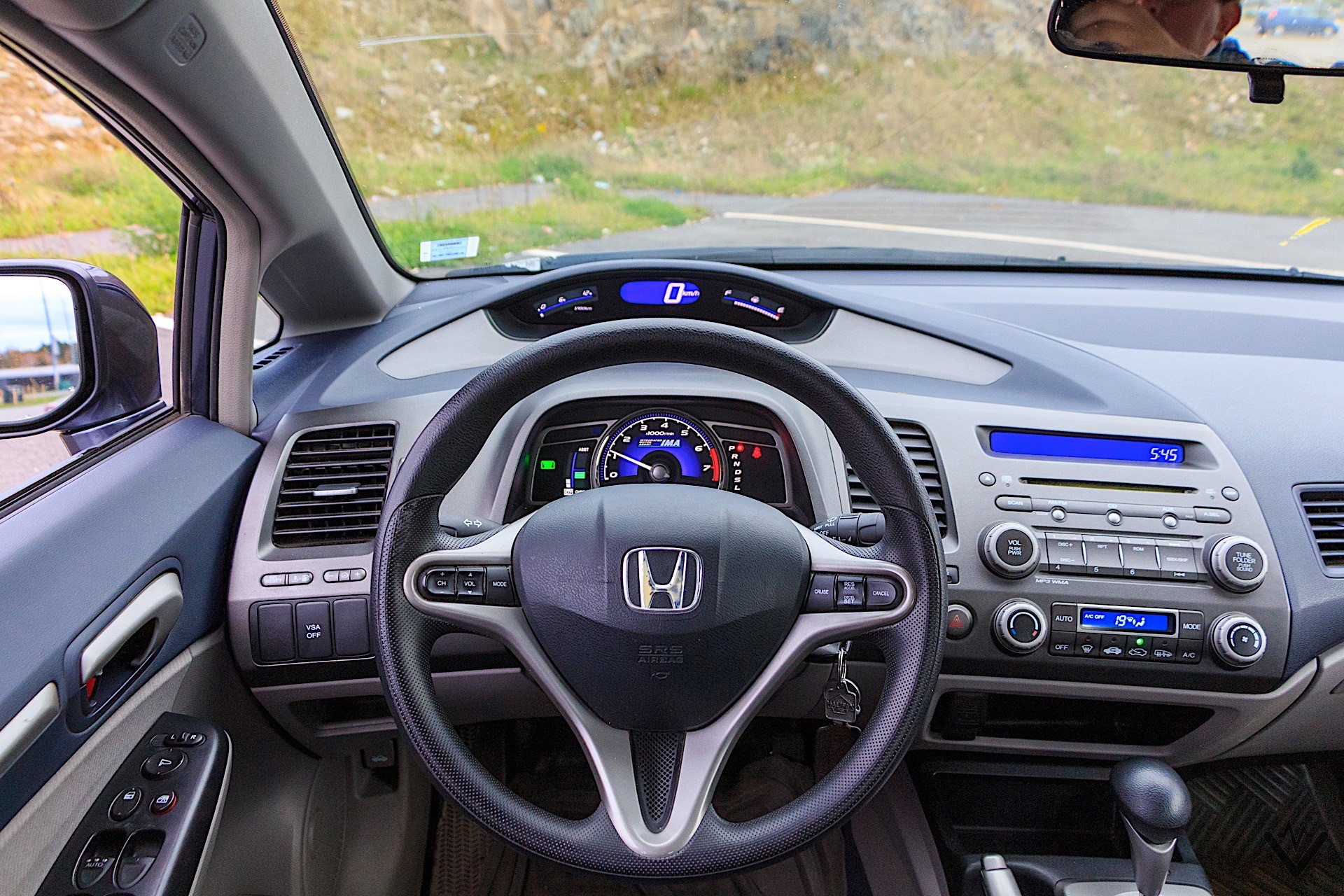 Honda Civic Hybrid multilevel dashboard.
Honda Civic Hybrid multilevel dashboard.
After the warranty battery replacement, the civic hybrid only visited repair shops for annual inspections and the widespread airbag recall affecting many 2000s-era vehicles. All other maintenance and repairs were performed at home. Despite its reliability, the civic hybrid lacked driving excitement. The combined 90 hp engine and 20 hp electric motor resulted in sluggish performance, especially during passing or merging maneuvers. The CVT, with its characteristic “rubber-banding” effect, which worsened over time despite fluid changes, detracted from driving enjoyment for someone who appreciates engaging driving dynamics. However, its mechanical resilience was undeniable. Even with less fuel-efficient tires, fuel economy remained consistently in the high 30s, making it difficult to criticize practically. As a reliable and economical appliance, it excelled. Even after high mileage, the blue interior showed less wear when I traded it in than my newer 2018 Civic shows now at a fraction of the mileage.
At 163,000 miles, an incident occurred leaving a grocery store. Stopped to allow a pedestrian to cross at a poorly positioned crosswalk, a Ford Ranger rear-ended the civic hybrid forcefully. The impact crumpled the rear quarter panel, exposing the trunk interior. Initially, I assumed this would total the car, given its age and mileage.
FORBIDDEN FRUIT: Kia Soul EV driven
Surprisingly, depreciation had plateaued. Despite its lack of “soul,” replacing the civic hybrid in similar condition for the expected insurance payout seemed unlikely. A body shop estimate of $9,000 confirmed this. Initially expecting a write-off, the insurance adjuster approved the repair. Hoping for a payout instead of repairs, I was surprised when nearly five figures were spent over a month to restore the car to its pre-accident condition – or close to it. Several return trips were necessary to finalize the repairs. The result was a high-mileage civic hybrid with a nearly entirely repainted body, and remarkably, no rust on the body itself.
At 180,000 miles, shortly after the brake work, a more significant investment was made. The original rear shocks were leaking, and a front tie rod exhibited excessive play. I opted for a comprehensive suspension overhaul, replacing all shocks and struts, along with inner and outer tie rods. Upgrading to components intended for a lowered Civic Si transformed the handling, providing a significantly improved driving experience for less than the cost of a decent set of tires.
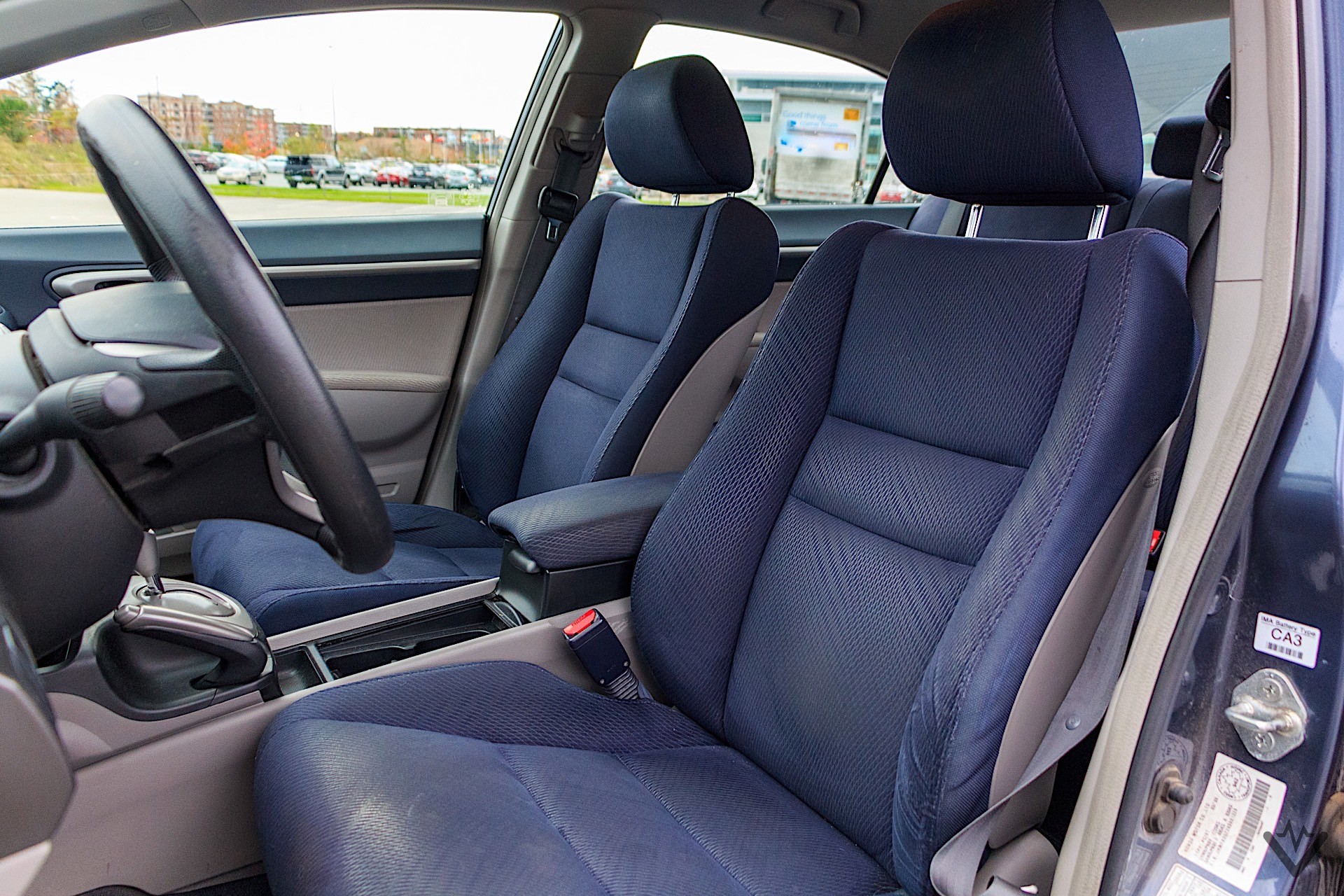 Civic Hybrid blue interior.
Civic Hybrid blue interior.
Vehicle modifications can revitalize driving enthusiasm, and suspension upgrades are a prime example, particularly when electric and gas models share chassis components. Imagine fitting Golf GTI components to an e-Golf or ID.3 – the principle is similar.
Finally, after eight years and just over 210,000 miles, it was time to move on from the civic hybrid. Fuel economy had gradually declined to the mid-30s, for reasons I couldn’t pinpoint. The air conditioning, never particularly powerful, further reduced fuel economy and performance when used at full capacity. Changing life circumstances, including working from home and frequently driving different test vehicles, reduced my annual mileage to around 10,000 miles.
This civic hybrid, often cited as one of the least desirable hybrid cars ever manufactured, served me reliably for eight years and over 210,000 miles, proving remarkably trouble-free.
Expecting a low trade-in offer, I visited my local Honda dealer, who declined to even take the car in trade. Fortunately, another dealership offered a surprisingly acceptable amount, sold it quickly, and that concluded my ownership of the civic hybrid.
This account might lack dramatic events, but that’s precisely the point. This civic hybrid, despite its reputation, proved to be exceptionally reliable over eight years and 210,000 miles. The minor CVT shudder could have been addressed with a clutch set replacement, but it didn’t seem necessary. Basic maintenance and a single warranty battery replacement – an issue anticipated at purchase and potentially resolvable DIY for a fraction of the cost – constituted the extent of unscheduled repairs. Hybrid and electric vehicles, especially from established manufacturers, are not inherently unreliable or to be feared.
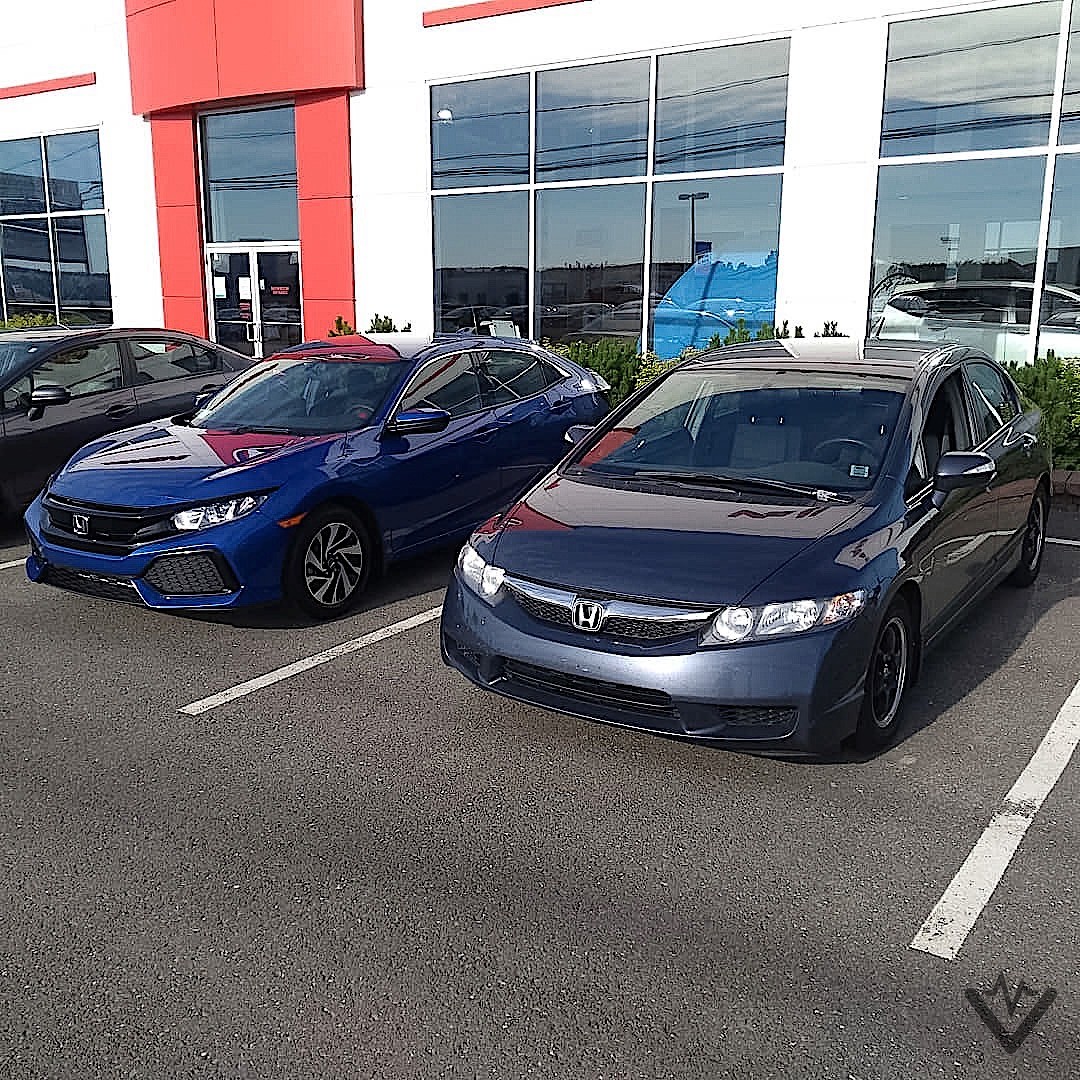 Honda Civic Hybrid trade-in day.
Honda Civic Hybrid trade-in day.
Can I guarantee every civic hybrid owner the same uneventful and long-lasting experience? Of course not. However, I can confidently assert that components outside the hybrid powertrain are fundamentally similar to those in millions of conventional gasoline cars and trucks built annually. Coupled with manufacturer warranties of at least eight years on hybrid electric components, these vehicles are engineered for durability. Comparing the cost of a medium-range EV battery pack to the cost of a new engine from a dealership reveals comparable expenses.
To provide closure to this civic hybrid story, a vehicle history check revealed it is still registered and on the road, with a recent registration renewal. While current mileage isn’t available, it is likely well over 250,000 miles and still running reliably. Embrace new automotive technology; don’t fear it.